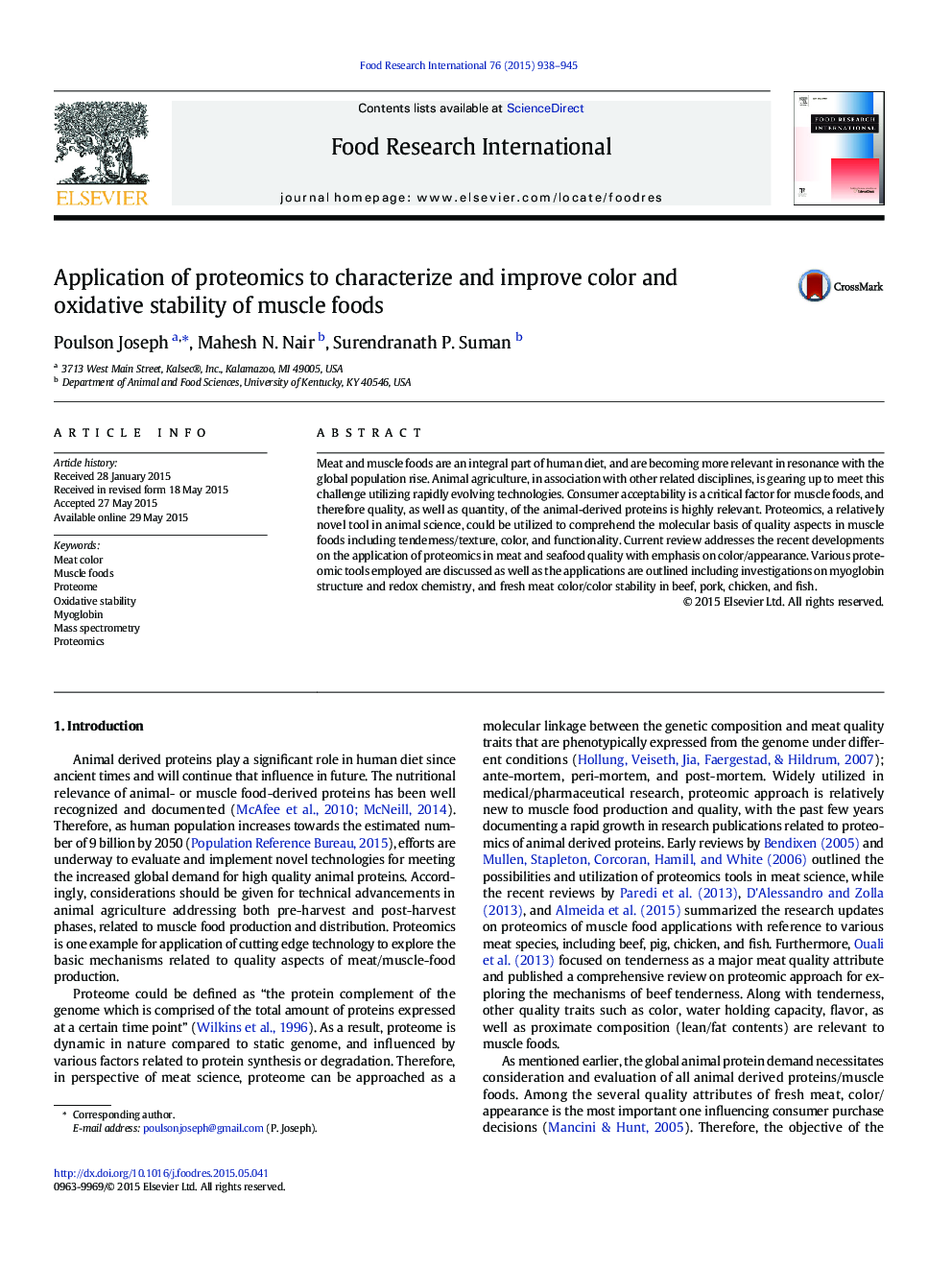| کد مقاله | کد نشریه | سال انتشار | مقاله انگلیسی | نسخه تمام متن |
|---|---|---|---|---|
| 4561274 | 1330639 | 2015 | 8 صفحه PDF | دانلود رایگان |
• Meat-/muscle food-color and appearance are critical for consumer acceptability.
• Biochemical basis of meat color can be explored using proteomic approaches.
• Mass spectrometry is used to examine myoglobin characteristics and meat color stability.
• Relevance of pre- and post-harvest strategies to improve muscle food quality related to color
Meat and muscle foods are an integral part of human diet, and are becoming more relevant in resonance with the global population rise. Animal agriculture, in association with other related disciplines, is gearing up to meet this challenge utilizing rapidly evolving technologies. Consumer acceptability is a critical factor for muscle foods, and therefore quality, as well as quantity, of the animal-derived proteins is highly relevant. Proteomics, a relatively novel tool in animal science, could be utilized to comprehend the molecular basis of quality aspects in muscle foods including tenderness/texture, color, and functionality. Current review addresses the recent developments on the application of proteomics in meat and seafood quality with emphasis on color/appearance. Various proteomic tools employed are discussed as well as the applications are outlined including investigations on myoglobin structure and redox chemistry, and fresh meat color/color stability in beef, pork, chicken, and fish.
Journal: Food Research International - Volume 76, Part 4, October 2015, Pages 938–945
